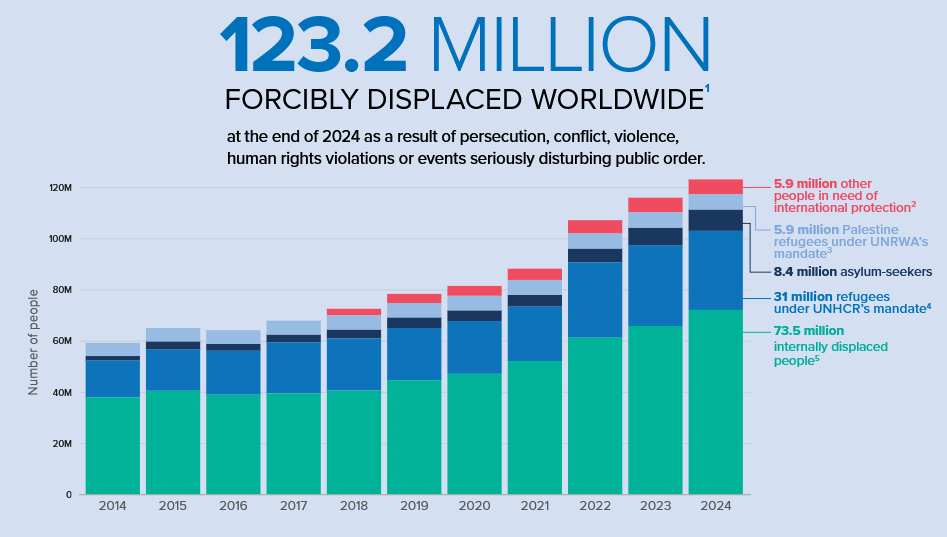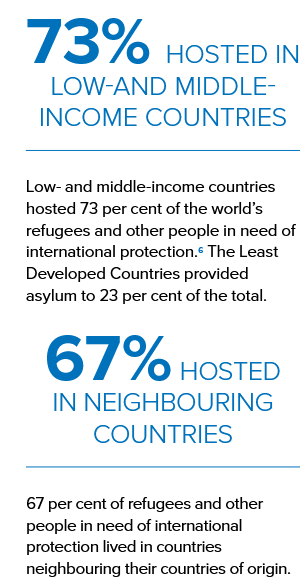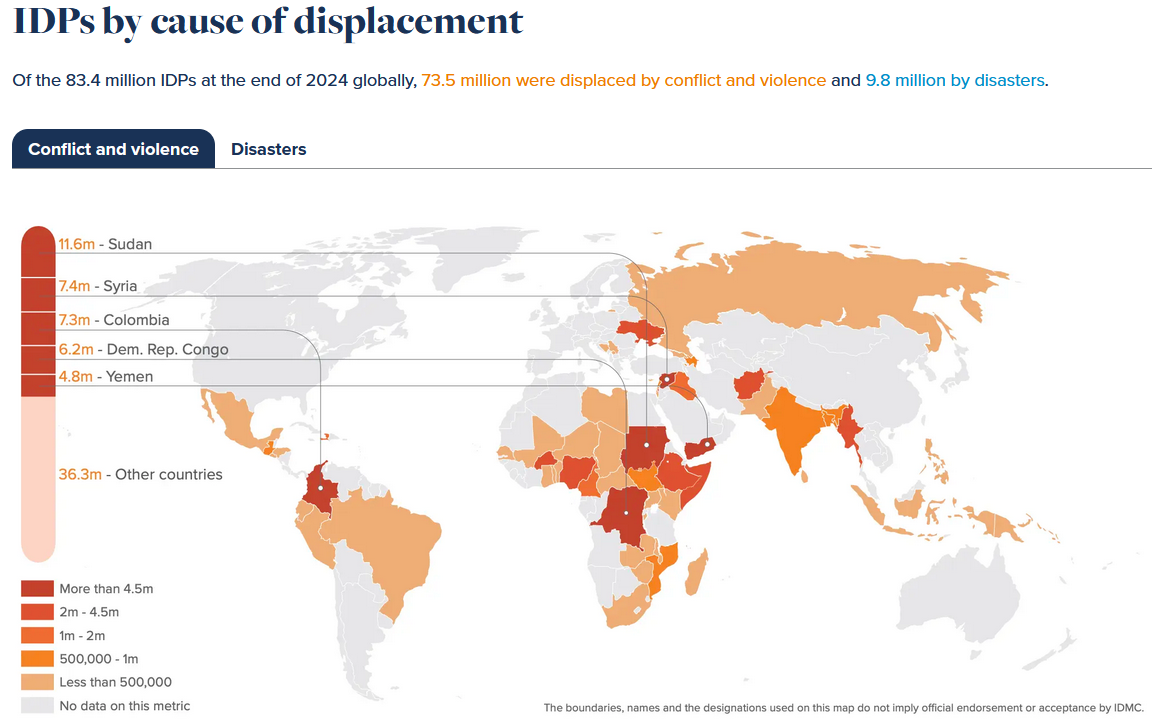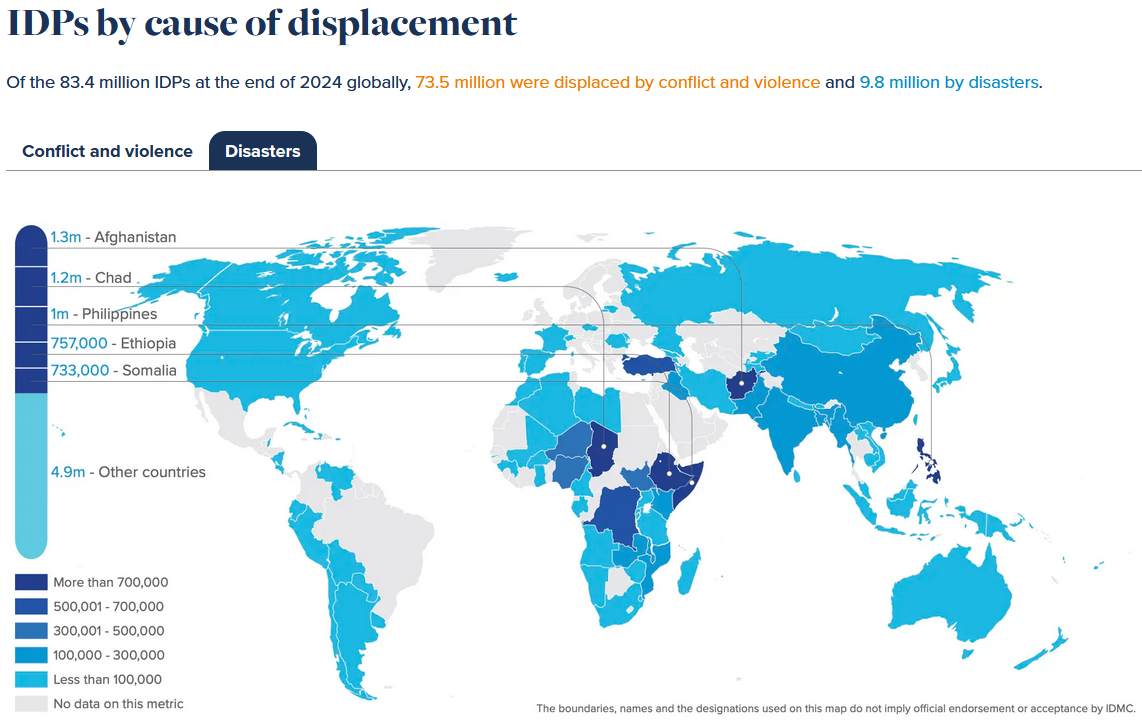Refugee Health
الخطوط العريضة للقسم
-
Note: if you want to gain a certificate for completing this course, you will have to create an account and log in as a student.
This course is designed to provide information on the threats to the health of refugees and asylum seekers, and canvass potential methods to help improve the situation. The focus is global, but there is a focus on refugees settled in developed countries. We start with this introduction on some definitions and data on numbers. Numbers change year by year, and we will try to keep updating data as they become available. However, many of the general principles remain constant.
As defined by UNHCR: "Refugees are people who have been forced to flee their homes by conflict or persecution. They are unwilling or unable to avail themselves of the protection of their own government, and must seek protection in another country."
Some definitions: It is worth considering the difference between migrants and refugees, and asylum seekers:
The 1951 Convention relating to the Status of Refugees, defines a refugee as:
“Any person who owing to a well founded fear of being persecuted for reasons of race, religion, nationality, membership of a particular social group or political opinion, is outside the country of his/her nationality and is unable, or owing to such fear, is unwilling to avail himself/herself of the protection of that country.”
An asylum seeker is a person who has sought protection as a refugee, but whose claim for refugee status has not yet been assessed. Many refugees have at some point been asylum seekers, that is, they have lodged an individual claim for protection and have had that claim assessed by a government or UNHCR.
Some refugees, however, do not formally seek protection as asylum seekers.During mass influx situations, people may be declared “prima facie” refugees without having undergone an individual assessment of their claims, as conducting individual interviews in these circumstances is generally impracticable (due the large numbers involved) and unnecessary (as the reasons for flight are usually self-evident). In other cases, refugees may be unable to access formal status determination processes or they may simply be unaware that they are entitled to claim protection as a refugee.
It is important to note that refugee status exists regardless of whether it has been formally recognised. People do not “become” refugees at the point when their claims for protection are upheld – they were already refugees, and the assessment process has simply recognised their pre-existing status. People become refugees (and are entitled to international protection and assistance) from the moment they flee their country due to a well-founded fear of persecution, as stipulated in the Refugee Convention. This means that a person can simultaneously be a refugee and an asylum seeker.
While many refugees are, or have been, asylum seekers, not all asylum seekers are refugees. Some will be found to have valid claims for protection which entitle them to international protection and assistance. Others will be found not to be refugees, nor to be in need of any other form of international protection, and as such are expected to return to their country of origin.
A migrant is a person who makes a conscious choice to leave their country to seek a better life elsewhere. Before they decided to leave their country, migrants can seek information about their new home, study the language and explore employment opportunities. They can plan their travel, take their belongings with them and say goodbye to the important people in their lives. They are free to return home at any time if things don’t work out as they had hoped, if they get homesick or if they wish to visit family members and friends left behind. (Refugee Council of Australia)
The scope of the problem is considerable, and growing 'Every year of the last decade, the numbers have climbed. Either the international community comes together to take action to address this human tragedy, resolve conflicts and find lasting solutions, or this terrible trend will continue' wrote Filippo Grandi, UN High Commissioner for Refugees. In the UNHCR report for 2024 he reports yet increasing numbers and states: “The search for peace must be at the heart of all efforts to find long-lasting solutions for refugees and others forced to flee their homes.” The figures below come from the 2025 report on 2024 data:

Most refugees are hosted in developing, not developed countries (most in a neighboring country).

Creative Commons Attribution 4.0 IGO license (CC BY 4.0 IGO) .
The UNHCR web site has information on which countries have a resettlement programme: Resettlement.
Of course as global politics changes, there are changes to the magnitude of the global refugee problem, and the countries most affected.
Internal displacement.
Let's not forget the problem of internal displacement. Those affected may experience similar health problems to those who have to flee to other countries. You can see more detail in the Global Report on Internal Displacement, 2025: 'The number of people living in internal displacement has more than doubled since 2018, reaching a record high of 83.4 million across 117 countries and territories at the end of 2024' Internal displacement can occur from conflict and violence, as well as from disasters, as two graphics from this report demonstrate:


Creative Commons – Attribution (BY) 3.0 IGO – license.
Ways to navigate the course: Click on the hyperlinks to take you to a set of resources in each section. There is also a place for reflection - you can either reflect on your own, or join the forum to put your views and respond to those of others.
Note: you can earn a Certificate if you access the resources and post a reflection in each Topic and pass the quiz at the end!
[The course was created by Professor Dick Heller, with advice from Dr Mitchell Smith of the NSW Refugee Health Service, Professor Mark Harris of the University of New South Wales, and Lucy Morgan of the Refugee Council of Australia]

This work is licensed under a Creative Commons Attribution 4.0 International License. -
While the course focuses on the health effects, these cannot be considered in isolation from the general effects of the refugee 'problem'. Health is intimately bound up with the environment in which refugees find themselves, both when we consider the causes and the impact of health effects.
In this Topic, we will consider the impacts on:
Those left behind
Refugees themselves
Host nations (including neighbouring countries)
-
What do you think is the most important impact of the refugee situation?
-
This Topic will cover the following areas: Communicable diseases; Mental health; Violence in camps; Maternal and child health; Human rights; and Access to health services - all issues of importance and concern for the health of refugees.
We recommend an excellent and open access series of online resources, by Unite for Sight.
You might also want to explore the papers in the series in BMC Medicine Migrant and Refugee Health.
-
What would you consider to be the main three health problems among refugees and asylum seekers?
-
This Topic presents some of the evidence about how we should provide healthcare to refugees on settlement in their country of refuge. There is special reference to screening and to mental health.
-
When refugees come to a new country - how do we best provide health care?
-
The reports quoted in the resources for this Topic provide good evidence based guidelines - you might want to reflect on to what extent they are being followed in your setting.
-
-
This Topic explores the politics surrounding refugees and asylum seekers. It shows how global is the issue, but has a special set of resources about the situation in Australia
-
Why do you think that refugee and asylum seekers have become such a politicised issue gloablly?
-
We have described the size of the refugee and asylum seeking problem globally, the health problems faced by this group and some of the politics surrounding the issue.
Now, what can we do?
-
Having read the various resources in this course, and looked at some examples of action possibilities, do you personally feel you would like to take some action - if so, what?
-
-
مفتوح: السبت، 27 يوليو 2019، 5:25 AM
Take this quiz - a score of 7/10 will qualify towards a certificate
-
